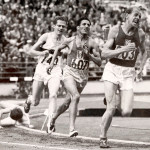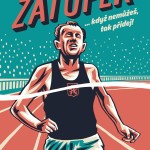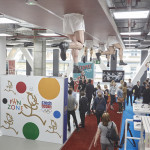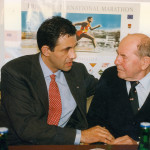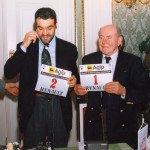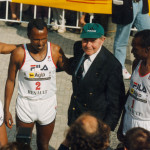The legendary Moravian athlete returns to the spotlight in the splendid comic panels drawn by Jaromír 99 and scripted by Jan Novák. The story of an extraordinary man, of his successes, of his legendary grimaces of anguish during races
“Když nemůžeš, tak přidej”, the legendary Czech athlete used to say, i.e. “when you can no longer run, accelerate”. A motto that summarized the character of Emil Zátopek, considered one of the best runners of all time. Now his extraordinary career has become the subject of a wonderful graphic novel written by Jan Novák, with drawings by Jaromír 99 (pseudonym of Jaromír Švejdík).
The work portrays one of the most important Czechoslovaks of the twentieth century (certainly the first among sportsmen), retracing his glory years, without neglecting the peculiarities that made him special. In addition to the unparalleled success in his races, there are the famous grimaces of anguish and suffering, as well as the sometimes unorthodox training methods, with his grueling workouts in the cold and in the woods, all of which made the athlete unique. The authors have not neglected any detail.
The comic begins in the twenties, in Kopřivnice in the Moravian-Silesian region, where Zátopek grew up in a large and very poor family. It is the origin of the story of the first runner to break 29 minute-barrier in the 10,000 meter race (a record set in 1954).
In 1938, at age 16, Emil started to work at Baťa, the largest shoe factory in Zlín, and that is where a coach in the company called him, along with three of his colleagues, to participate in a running race (against his will). For the record the future champion came second, but it was that day when Emil discovered the beauty of racing.
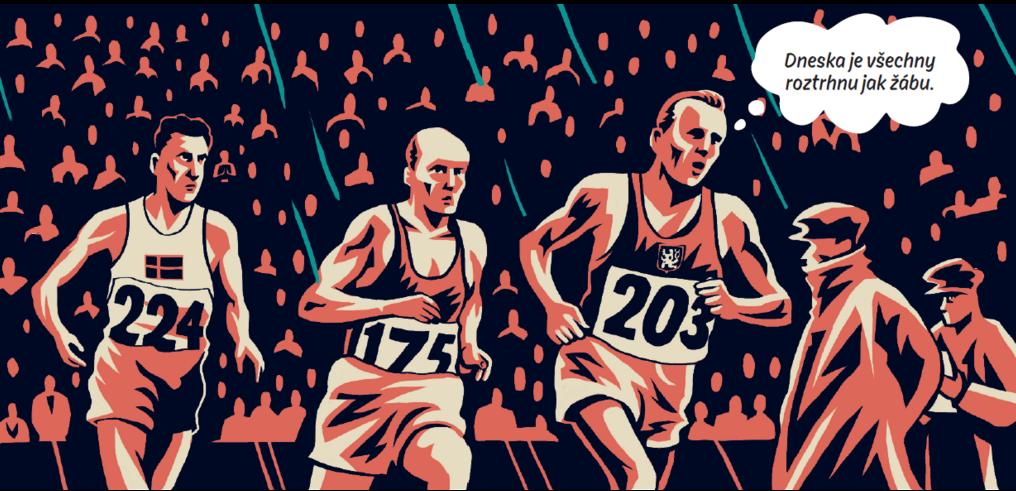 From that moment Zátopek thought only of racing, which he devoted all his free time from work to. Things become simpler when entering the Military Academy, where he had all the necessary time to train, and obviously, to improve.
From that moment Zátopek thought only of racing, which he devoted all his free time from work to. Things become simpler when entering the Military Academy, where he had all the necessary time to train, and obviously, to improve.
From the toils of his early years we move on to the time when his talent became known to the public. We arrive at the 1948 Olympics in London, where Emil wins the gold in the 10,000 meters and finishes second in the 5,000. Although he managed to achieve international popularity in London, and set the world record in the 10,000 meters twice in the same competition, before improving it on three other occasions in the following years, his achievements at the Olympics in Helsinki in 1952 were those that made him become a legend.
If his gold medals in the 5,000 and 10,000m races didn’t come as a big surprise, his victory in the marathon astounded the spectators. Despite boasting stratospheric times both in the 20 and 30 km runs (holding the world record in both), Zátopek had never run a marathon, but decided to take part in the competition anyway. Having no experience whatsoever in the discipline, he had to rely on a very particular, yet simple tactic; he “marked” the most feared rival, the world record holder of the distance, Englishman Jim Peters, and ran side by side by side with him. Peters, consequently, ran at a faster speed believing he would be able to tire the Czechoslovak runner out. The result? Peters did not finish the race and Zátopek won his third Olympic gold.
Fortunately the authors of the comic did not limit themselves to describing only the sporting achievements. Among the most significant victories took place just before the Helsinki Games, when the communist regime decided to exclude the runner Stanislav Jungwirth from the Olympic team of Czechoslovakia, since he was the son of a dissident. Zátopek did not accept it, and challenged the authorities: “if he doesn’t go, I don’t go either”. At first the Communists seemed adamant, and the facts indicated that both would remain at home. However, in the end the authorities, perhaps even frightened by the popularity of Zátopek, changed their minds and allowed both to leave for the Olympic Games.
It was actually this episode that convinced Jan Novák to accept the task of writing a script to tell the story he describes as one of “a man against the system, of the small against the great, perfect material for cinema”. Curiously, he was first asked to write the story of Zátopek by a film director, David Ondříček.
Novák, born in Kolín in 1953, is known primarily for his work in the theatre and cinema, both in English and in Czech. From 1969 onwards he has spent most of his life in the United States, where he became a friend of the Czech-Canadian writer and publisher Josef Škvorecký, an important figure renowned for the publication of books written by dissidents, banned by communist Czechoslovakia.
Having finished the screenplay, Novák waited a long time, without receiving news from Ondříček, the director, and could not understand why the film was not being made. At a certain point, an idea came to him…
The Bohemian writer was convinced from the start that the subject could work even better in the form of a comic. It was due to this that he thought of contacting the artist Jaromír 99, pen name of Jaromír Švejdík. The latter (born in 1963), in addition to being a popular singer and musician, in recent years has also made a name for himself for having illustrated the graphic novel Alois Nebel (which also become an animated film in 2011), and a comic book version of Kafka’s The Castle.
When meeting the first time for a beer, Novák and Švejdík immediately found themselves in perfect harmony. The result is a wonderful comic, which uses just four colours, though primarily orange and turquoise.
Having published this year in Prague thanks to a collaboration between publishers Argo and Paseka, with the financial contribution of the Czech Olympic Committee, the authors hope they can follow the German release of the comic with it crossing also the borders of other countries. The first step was the event on 7 June at the Embassy of the Czech Republic in Washington, titled “The Story of the Legendary Czech runner Emil Zátopek in Comics”, at which the two authors were also present.
Yet the tributes do not end there. For the Summer Olympic Games to be held in Rio de Janeiro, from 5 August to 21 August 2016, the Czech team will honour the national hero by displaying a uniform with his self-portrait, reinterpreted and drawn by the artist Milan Jaroš.
In addition to this will be the tribute from David Černý, with a certainly particular work: electric running legs, that will be installed and connected to the Czech Olympic house as well as in various places in Prague. And yet still, a newly published biography of the athlete written by the Czech historian Pavel Kosatík.
Finally, long-awaited news: director David Ondříček began shooting the film version of the subject of Novák. The legend of the human locomotive, a name which Zátopek had earned due to his way of panting during the race, is destined to last much longer.
by Lawrence Formisano





